2019 Slatt Scholars

Janaya Brown
Empowering Ugandans to Power Uganda: Analysing the Mechanical Properties and Various Impacts of Novel Weaved Wind Turbine Blades
Department of Aerospace and Mechanical Engineering
Faculty Advisor: Abigail Mechtenberg
The goal of this project is to provide information about novel Ugandan wind turbine blades. More specifically, this project intends to provide supporting information to the viability of hand-weaved wind turbine blades by analyzing the mechanical properties of the material and comparing these properties to those of materials commonly used for wind turbine blades. These blades are the result of the joint collaboration of Notre Dame’s ESDD research team and its partner researchers and collaborators in Uganda.
This project will provide technical information regarding the blades mechanical characteristics in three areas. The areas are the flexural and tensile properties as well as the Betz’s efficiency curve of model turbines with hand-weaved blades. In union with this last area, this project plans to build a wind tunnel with partners at Makerere University for testing models too large to transport to the United States. In addition to these technical areas, the project will also investigate the economic, environmental, and social impacts involved with hand-weaving the blades with local materials.

Alondra Marrero
Biofuels Project
Universidad del Sagrado Corazon
Faculty Advisor: Na Wei
I’m most interested in studying new energy sources, because I believe that we have what we need right in our environment, and we just need to work with it. One of my favorite topics is bioremediation, where we work with our environment to fix the problem we caused. Also, I believe the best remedy is education on all levels about our planet and how it works so we can take care of it. Through my research with microbial fuel cells, I became fascinated about how these microbes survive their environments. We worked with facultative anaerobes. What’s amazing about these little guys is they fight to survive. If their environment has oxygen, they start produce ATP by respiration. But if oxygen is absent they go and do fermentation. That’s quite some survival skills. They also do electron transfer that may produce electricity through redoxreactions. Our world has survived so many things, and it's still here. We just need to give it the little push to heal. It may seem that there’s only fossil fuels, but there is so much more. We have ethanol, solar power, and biodiesel, among so many others. I hope to learn about all these energy sources and how to apply or develop one of my own. I know the University of Notre Dame can give me that experience to guide me to changing the world.

Emily Doyle
Magnesium-Sulfur Battery Production
Department of Chemical and Biomolecular Engineering
Faculty Advisor: Jeffrey Kantor
This project focuses on magnesium sulfur batteries, which are a unique form of energy storage that have promising prospects for use in commercial settings such as the automotive industry and sustainable home environments. A problem common to metal-sulfur batteries is that of the polysulfide shuttle effect, in which intermediate discharge/charge products known as polysulfides poison the anode surface and undergo a redox shuttle process. This phenomenon results in poor capacity retention and short life-cycles. In our research, the nature of polysulfides generated during the battery cell cycling will be observed and characterized through qualitative and quantitative procedures. With the knowledge of the behavior of polysulfides throughout cell cycling, we will be able to know how best to manipulate the battery to control polysulfide transport, maximize cell life, and increase power output. One major goal of the project is to thoroughly understand the speciation of polysulfide anions within the battery cell. The speciation of anions, in terms of the number of sulfur atoms per polysulfide anion, will give insight into the design requirements for a successful battery cell. For example, this information will enable us to develop a suitable polymer for physical separation between the anode and cathode of the battery, which will maximize the cell life by blocking the polysulfides from crossing over to the anode, thereby mitigating the polysulfide shuttle effect.

Henri Francois
Empowering Haitians to Power Haiti: Restoring Energy Production Capacity to Haiti: Energy Generation Systems and Microgrid Optimization
Department of Computer Science and Engineering
Faculty Advisor: Abigail Mechtenberg
Building on my past research, the project for the summer of 2019 is an attempt at the reproduction of the E3 curriculum designed by Dr. Abigail Mechtenberg and her associates (and which was first implemented in Uganda) in Port-au-Prince with a new energy team. Beyond implementing the E3 curriculum, I will be looking at data from the current project in Uganda to algorithmically to determine, based on Hinche and Port-au-Prince’s specific geographical situations, an optimal all renewable energy mini grid. Specifically, international organizations designed and installed an all solar panel powered electricity system for the Hôpital Universitaire de Mirebalais which is failing their patients.
My research will attempt to build on the findings of Z. Huang et al. who developed a novel method of minimizing the transmission loss in an energy grid based on the energy generated by different nodes in a system, and the distances separating these nodes, as within a graph. Based on this description, the main objectives can be described as follows: first, to implement the E3 curriculum in Port-au-Prince (in the context of which it will need to be adjusted), and second, to develop an algorithm or a set of algorithms to determine the optimal configuration(s) for a renewable energy microgrid based on the area’s particular characteristics.
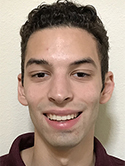
Seancarlos Gonzalez
Developing carbon cloth interlayer cathodes with tungsten disulfide catalysts for Magnesium Sulfur batteries
Department of Chemical and Biomolecular Engineering
Faculty Advisor: Jennifer Schaefer
The Schaefer Research Group studies ion transport and interfacial phenomena while focusing on developing electrochemical storage devices (batteries). My personal research centers on making the cathodes for magnesium sulfur batteries. Lithium batteries have a higher reduction potential than magnesium batteries, but magnesium is cheaper, more accessible, and exhibits more uniform metal deposition. A problem that these magnesium sulfur batteries face is that S8 molecules in the cathode break down to form intermediate magnesium polysulfides instead of reducing to MgS, and these polysulfides poison the anode and ruin the longevity of the battery. My research goal is to develop the best cathode to prevent the migration of polysulfides and thus improve the effectiveness of magnesium sulfur batteries. To accomplish this, I have been making carbon cloth interlayer cathodes with sulfur and a tungsten disulfide catalyst. The carbon cloth serves as a barrier blocking the flow of polysulfides while also providing fast electron transfer. The tungsten disulfide acts as a catalyst to adsorb the polysulfides and disperses uniformly on the carbon cloth interlayer. Although this should solve the problem in theory, my research is to test how these cathodes work in practice.
Seancarlos Gonzalez Final Report

Jack Gorman
Application of Microfiber Coatings to Aerodynamic Surfaces
Department of Aerospace and Mechanical Engineering
Faculty Advisor: Hirotaka Sakaue
Many applications in the transportation industry aim to move goods with maximum energy efficiency. Large trucks with their rectangular frames are not the most aerodynamics and thus, generate high amounts of drag, increasing their energy consumption. This drag can be reduced using microfiber coatings applied to the surface of the trailer. Microfiber coatings are created using fibers 0.5 mm to 1 m in length and can be applied to nearly any surface. The primary objective of this project explores the drag reduction and noise reduction capabilities of these microfiber coatings in an aerodynamic scope in order to reduce energy consumption. Manufacturing methods to alter the density and angle of the fibers is integral to optimizing energy consumption through drag reduction. Overall, turbulence reduction is the underlying goal of microfiber applications. Turbulence leads to increases in both drag and noise generation and these, in turn, lead to energy inefficiencies. As well as studying processes to produce microfibers and their potential uses on trailers, this project focuses on their application to drones. Drones offer a method of parcel delivery that is far more energy efficient than conventional ground shipment. Reducing noise generation is vital to paving the way for drones to become a mainstream method of delivery and eliminate emissions from ground delivery vehicles. Moreover, these drones lose much energy through their propellers which generate drag as a result of turbulent flow. Microfibers along the propellers as well as the frame would allow drones to be even more energy efficient than traditional methods in place today. These are just two applications of microfiber coatings that could revolutionize the transportation industry. In the future, additional applications will be explored in an attempt to reduce energy consumption in other industries altogether.
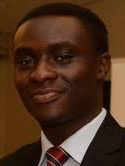
Kalule Guwatudde
Evaluating pay-as-you-go systems in ESDD energy devices
Mendoza College of Business
Faculty Advisor: Abigail Mechtenberg
Pay-as-you-go (PAYGO) is a system currently used by solar companies in “so-called” developing economies to sell solar home systems on a rent to own basis. People living off the grid are required to make a down payment in order to take the solar system home and then pay a pre-set amount daily for 24 months after which the system unlocks itself and they can get power without paying. In a report by Dalberg Advisors and GOGLA, 130 million home solar devices had been sold between 2010 and 2018 in “so-called” developing economies. However, the initial excitement that made millions of people to purchase solar devices has waned because the solar systems lose their efficiency over the 2-year repayment period, cannot be repaired since there is no local technical expertise and cannot easily be upgraded to support more energy rated devices as people upgrade their energy needs. The Energy and Sustainable Development with Design lab (ESDD) has developed renewable energy microgrids and human powered systems that solve all these bottlenecks. These devices include a merry go round generator, sewing machine generator, hand cranked generator, bike generator and concentrated solar panels. My research is geared towards incorporating the PAYGO system in the micro-grid systems currently being developed in the ESDD research lab led by Prof. Abigail Mechtenberg. ESDD Micro-grids can support higher rated energy devices at a lower cost than solar systems can and have a local network of support technicians and engineers to carry out maintenance and repairs. My research will also examine how ESDD microgrids and human-powered systems can be used to replace solar home systems in rural off-grid communities whose energy needs are not reliably being met by current solar systems. I will also evaluate STS (Standard Transfer Specification) based PAYGO systems with IC(Integrated Circuit) card recharge based PAYGO systems. STS systems rely on 20-digit tokens for issuing power credits but IC card systems rely on smart cards.

Erick Mendez Rios
Energy Storage Project
University of Puerto Rico-Mayaguez
Faculty Advisor: Edward Maginn
Until now I have enjoyed the theoretical energy related topics of many classes I have taken and would like to be able to engage directly with some of these topics. Out of the many topics, and areas of this field I am mainly interested in energy conversion and efficiency, because this is one of the main limiting factors faced after power is generated. No matter how much energy is generated there is always a percentage of loss when it is distributed and used. Advances in this area can greatly lower the needs of power generation, lowering the impact in the environment and minimizing long term costs for individuals. This at the same time favors the use of bio friendly ways of generating the needed electricity, like windmills and solar panels.
Research and projects in this field have the potential of impacting multiple areas of energy use and storage. Better energy conversion makes us be more versatile in how we handle the multiple types of energy we have access to. This in turn leads the way to new technologies that in the long term benefits and revolutionizes the way we live and use the world around us.
Erick Mendez Rios Final Report
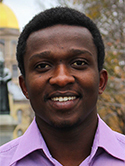
Perfect Mfashijwenimana
Empowering Rwandans to Power Rwanda: Model predictive control for noise characteristics in locally built devices
Department of Electrical Engineering
Faculty Advisor: Abigail Mechtenberg
One difference between locally built devices in Rwanda and imported devices arises from the manufacturing process where many imported devices built by robots limit the labor opportunities needed in Rwanda. In Rwanda, unemployment is 17% or almost six times the rate in the US. However, locally built devices can create higher levels of noise not currently considered in charge controllers for minigrids. This research project seeks to configure minigrid charge controlling electronic devices accordingly balancing the model predictive control (MCP) algorithms with the noise uncertainties. My major research goal is to create a control algorithm that differentiates noise characteristics of various energy devices built by the Rwandan energy team at University of Rwanda, a collaboration with Dr. Mechtenberg for over a year. In addition, understanding this will lead to creating a charge controller that can interface with multiple energy sources.
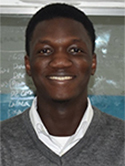
Musodiq Ogunlowo
Empowering Nigerians to Power Nigeria: Understanding the relationship between demand and capacity shortage to Design Multiple Energy Source Input Charge Controller with Locally Built Systems
Department of Electrical Engineering
Faculty Advisor: Abigail Mechtenberg
Our analysis of previous literature, “Energy Optimization Map for Off-Grid Health Clinics in Nigeria” (Anayochukwu) provides analysis of weather conditions in areas and how that affects cost of setting up power for healthcare in those regions. Since our research has been able to design some devices such as the gravity light and bicycle generators and wind-turbines, capacity shortages can be allowed within these systems while taking into account that locally built systems can be used to account for the capacity shortages. In order for this collaboration between the systems to occur, there needs to be availability of charge controllers. Charge controllers are typically set up to work with singular energy sources. However, the combination of multiple energy sources would require a charge controller that would allow for seamless interaction between the sources.
Simulations being worked on using HOMER Energy would allow for economic understanding of current system set ups and also allow data generated from locally built devices so as to understand how much cost can be cut down. The design of this charge controllers would require multiple simulations using different software such as HOMER energy and MATLAB Simscape.
This research focuses on designing more energy generation systems that can be incorporated together to create a mini-grid accompanied with multiple-input charge controllers. The vast majority of charge controllers are designed and built for one energy sources and typically for solar panels and/or wind turbines and assume electricity demand does not grow significantly. This research would build upon collaborations developed over 2018 summer and 2019 winter break.
As I am currently running several simulations utilizing HOMER Energy and Matlab Simscape Electrical power system simulations, I plan on corroborating the data that would be obtained from simulation with actual data. The vital research objective involves understanding the level of uncertainty in small scale electricity generating devices and how it affects the ability of the charge controller to implement efficient maximum power point tracking control algorithms. The goal would be to create the foundation for a senior undergraduate thesis on the trajectory for Nigeria to implement Smart Grids.
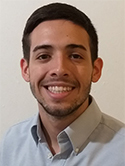
Norbert Xavier Ramos Lopez
Biofuels Project
University of Puerto Rico-Mayaguez
Faculty Advisor: Jason Hicks
We live in a world dominated by energy derived from fossil fuels and while they are great at producing energy, the toll it takes on the environment is too much. To me there is not one specific alternative energy that is "the best". The most efficient alternative energy can always depend on the location or circumstances. A windy place could be best benefited by wind power and a place close to a big water source, a type of membrane-based process could work best. Therefore, I believe every technique of producing cleaner energy should be studied and continually improved. When the time comes to start implementing cleaner ways to produce energy, we can find the best fit depending on the circumstances.
If I had to choose, one of the areas I am most interested in is biofuels. Most transportation methods in the world and a lot of machines use combustion engines. Biofuels are the only viable option that can replace fossil fuels and be used in already existing engines. This would be a great place to start since the changes would not be so drastic that people would find hard to follow. If biofuels could be developed to a degree in which some day, they can completely replace fossil fuels the positive effect it could have in climate change would be incalculable.
Norbert Xavier Ramos Lopez Final Report

Kimberly Riordan
Targeting a trigonal pyramidal sulfur radical for battery applications
Department of Chemistry and Biochemistry
Faculty Advisor: Emily Tsui
Lithium-sulfur batteries are comparable to lithium-ion batteries and have the potential for higher energy density. In lithium-sulfur batteries, sulfur is used as the cathode, so understanding its radical chemistry is important (1). This research project focuses on synthesizing a sulfur-based radical species. Imada, et al. have published a sulfur radical with T-shape geometry at the sulfur atom. By changing the geometry to a trigonal pyramidal sulfur radical (2-centered, 3-electron bond), the electronics of the radical are altered (2). This geometry is unknown for sulfur, and we hypothesize that these orbital changes will lead to novel properties for better applications in lithium-sulfur batteries.
(1) J. Am. Chem. Soc. 2016, 138, 479−482
(2) Anklam, E.; Margaretha, P. Organic Sulfuranyl Radicals. Research on Chemical Intermediates 1989, 11, 127-155.